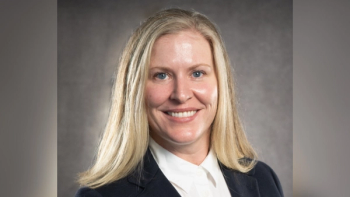
Enhancing Diversity Through Trial Design
In part 2 of this video interview with ACT editor Andy Studna, Tirisham Gyang, MD, assistant professor of neurology at The Ohio State University discusses how industry can effectively enroll patients from underrepresented populations into their trials.
ACT: What does the clinical research industry need to do better to recruit more underrepresented populations into their trials?
Tirisham Gyang: The issue with clinical trials is very important because we want our clinical trials to be very diverse, we want clinical trials to be inclusive of all the patients that we could potentially see, so that if there are differences between one demographic from another, we're able to tell, and we can generalize the results of those trials for everybody. And so what can we do to be more inclusive? I think it's just making sure that researchers, where we're conducting the studies, the people that are recruiting are being open, and are letting everybody know about those trials, and also engaging with a diverse community about trials. We want to be aware of where we select as clinical trial sites. We have sites in specific places that maybe do not capture a very diverse patient population, then we're just only going to recruit what that center is able to recruit. There's a lot of different things, but I think it's being very open and very inclusive in terms of clinical trials sites, we want a very diverse work team, that is recruiting patients, for clinical trials, because patients always are more comfortable when they see people that they can identify with. And then for instance, for me, as a doctor, clinical trials are just open to everyone. I talked to all my patients, I talked about these other potential clinical trials, do you want to be involved in any of them? So we have to be very open and not intentionally or unintentionally exclude people from certain trials. I think in terms of the study designs, there are things that can be done as well, in terms of allowing a study design that is able to capture a diverse population, making sure that maybe there's some flexibility in the trial design that allows for patients that maybe may not be able to attend based on different reasons, so that they are able to be enrolled in those trials. So I think it's in a lot of different ways, whether it's, designing the study design, inclusion or exclusion criteria, designing flexibility into the trial schedules, and also in the sites that we are accepting to enroll patients into clinical trials.
ACT: What are some things that can be done to enhance diversity in trials?
Gyang: I think there's a lot of different things that can be done to enhance the diversity in clinical trials. I think including some flexibility in the trial design, so that different types of people can be enrolled. For instance, you could allow for paying for transportation for people that have to drive from a nearby town, some trials will allow you to pay for a hotel room for the person coming in for the clinical trial. And then I think community engagement is also very helpful. We have a lot of programs that we’re directly engaging with the community and with our patients, and talking about clinical trials during these events, talking about clinical trials during any of the patient education encounters that we have. When we're talking to the public about it, that helps to create awareness in the community about the different types of clinical research. And it almost normalizes research, because for some people research is just kind of some high end; it's like, “Oh, wow, I didn't think that that was something that I could do.” But engaging people and just talking about it, and making it simple, just helping people understand the concept of clinical research makes it attainable and makes it something they feel like this is something that they could definitely do. So I think it's a lot of education to the community, education to patients, and also build in some flexibility in the clinical trial design where we're able to accommodate people that come from a distance and people that may need more resources in order to maybe stay off work for a certain amount of time to be able to come into the trial. It's always being proactive, being intentional and thinking about those things ahead of time so that we’re making accommodations when we design the trial.
Newsletter
Stay current in clinical research with Applied Clinical Trials, providing expert insights, regulatory updates, and practical strategies for successful clinical trial design and execution.






.png)



.png)



.png)
.png)
